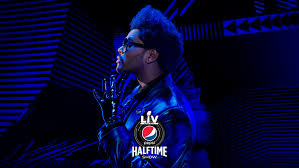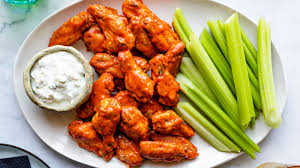By: Natalie Panciera, Media Supervisor



Advertising’s biggest week of the year is finally here, but it certainly looks and feels more subdued due to COVID 19. Traditionally, the week of the Super Bowl is teeming with massive media presence, fans, celebrities, corporate sponsors, and players gathered to celebrate the pinnacle of sports. National brands are teasing their multi-million dollar commercials and making the rounds. The overall atmosphere is electric. But now, there are no media days or parties or full restaurants and bars. And without those newsworthy images and interviews leading up to Sunday, it frankly makes the entire thing feel a little…uneventful.
The quiet nature of this week extends far beyond Tampa, where the Super Bowl is being played in front of a reduced crowd of 25,000. Around the country, restaurants and bars that usually plan for huge Super Bowl parties are barred from holding these events, with some cities like Los Angeles even banning TV screens outside in the hopes to limit large gatherings of people (Los Angeles Daily News). The only constant it seems is the ageless wonder Tom Brady, who is set to try to win a Super Bowl for his new Tampa Bay Bucs against the defending Kansas City Chiefs and 24-year-old Patrick Mahomes.
The big question for marketers is what effect the subdued atmosphere will have on other staples of the big game: huge TV ratings and increased consumer spending in some key categories.
Without the usual build up and anticipation, some agencies are expecting a decline in viewership this year. Numerator, a data and tech company serving the market research space, launched a consumer sentiment study to understand how consumers plan to watch Super Bowl LV. Here is what they found:
- 91% of past Super Bowl watchers plan to watch it again this year – however, viewing habits in the COVID era will change:
- Nearly three-fourths (72%) plan to watch at home alone, or with members of their household, up from 53% in 2020.
- 14% plan to watch at a gathering with members outside of their household, down from 39% last year.
- 3% plan to watch at a bar, restaurant, or another public place, down from 6% in 2020.
- 9% of past Super Bowl watchers do not plan to watch the game, up significantly from 1% in 2020.
The Super Bowl is going to be the most watched program on Sunday night. There is no question about that. But will it meet the viewership of previous years? According to the Numerator survey it may not. However, CBS did end up selling out their inventory for the game at a rate of $5.5 million per 30-second spot. That is in line with last year’s Super Bowl on Fox (Deadline). So brands that opted in seem confident that viewership will at least mirror last year’s Super Bowl. Solid conference title games that grew in viewership over last year bode well for Sunday, at least in regard to football fan viewership. But what about those casual fans who tune in for the commercials and the halftime show or were only there for the party? Are they reflected in that predicted 9-point decline in viewers?
Those who look forward to seeing what their favorite brands do during commercial breaks may not end up tuning in after hearing that brands such as Budweiser opted out for the first time in 37 years, or that the overall tone of ads may not be the funny or raucous ads of the past. As CBS Sports chairman Sean McManus said, the tone of the broadcast “is going to be a little different this year given all the country has been though. We’re not
going to be somber and we’re not going to be depressing, but I think we’re going to put everything in perspective.” (Deadline). And then there is the halftime show. This year, Canadian artist The Weeknd will appear on the world’s biggest stage to perform his set. The Weeknd has won three Grammy Awards and has three number one selling albums in the United States (NBC Sports). He has also apparently invested 7 million of his own dollars into making the show a cinematic experience (SportingNews.com). But does anyone over 40 know who The Weeknd is? Will he bring in a massive audience like generational artists Bruce Springsteen or Prince?
Intermark Group predicts that household ratings will increase as people stay at home to watch rather than gather, but demographic ratings may not due to some loss of casual fans. The key may be the competitiveness of the game; if the past is any indication, if the score is close in the fourth quarter late audience growth can overcome any negative effects on viewership.
Did you know that the Saturday before the Super Bowl has historically been the #1 or #2 CPG (consumer packaged goods) shopping day of the year? (Numerator). While spending and purchases will vary this year, the odds are in CPG’s favor, with indications of a strong selling season with upwards of $10 billion in key category sales purchased in the two weeks ahead of the Super Bowl Sunday (Progressive Grocer). Overall, households are not planning on spending as much because there are fewer large parties, but there will be more households buying smaller purchases, which should help even out spending. To wit, according to reports we are already
running out of chicken wings.
There will be more pickup, takeout and delivery this year than in previous years. This trend is reflected in brands that will air commercials during the Super Bowl. For example DoorDash is making their debut on Sunday as the company saw tremendous growth last year due to COVID. The :60 spot will air during the first quarter and feature rapper Daveed Diggs and Sesame Street. Uber Eats will feature Mike Myers and Dana Carvey reprising Wayne’s World. Other “stay at home” stars of the pandemic, Amazon and Vroom.com, will make appearances as well. Here is how Numerator sees consumer spending for the game:
- 91% of Super Bowl watchers plan to purchase food or drink for the game.
- Just 15% of respondents indicate they plan to spend more on food or drink for the game.
- However, 38% will spend less on food and drinks, with 29% planning to reduce spend, and 9% not making any purchases for this year’s game.
- 28% plan to order their Super Bowl groceries online, with 18% planning to order for pickup (e.g., Click & Collect), and 13% for delivery.
- 7% plan to order from a restaurant for takeout or delivery.
So like many aspects of our daily lives these days the Super Bowl may not be quite as super as we’d like, but the majority of us will still tune in and probably overindulge in traditional game day fare.